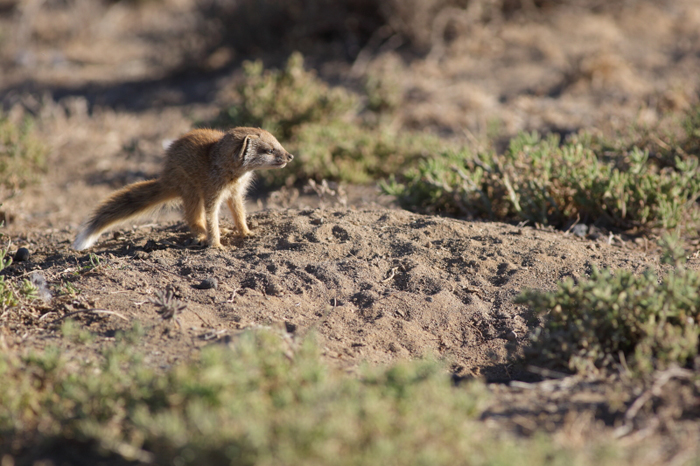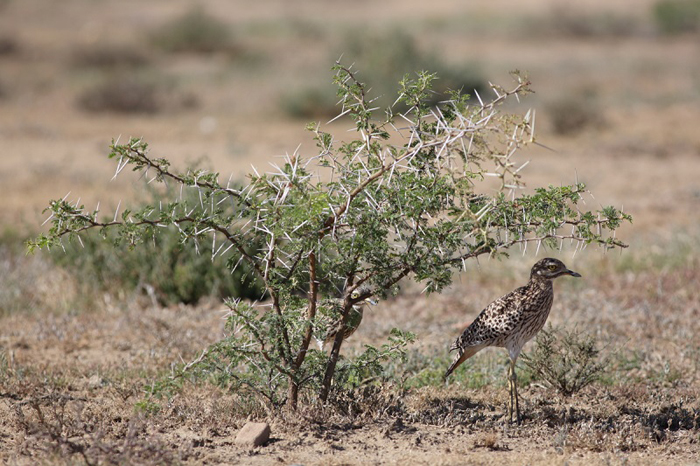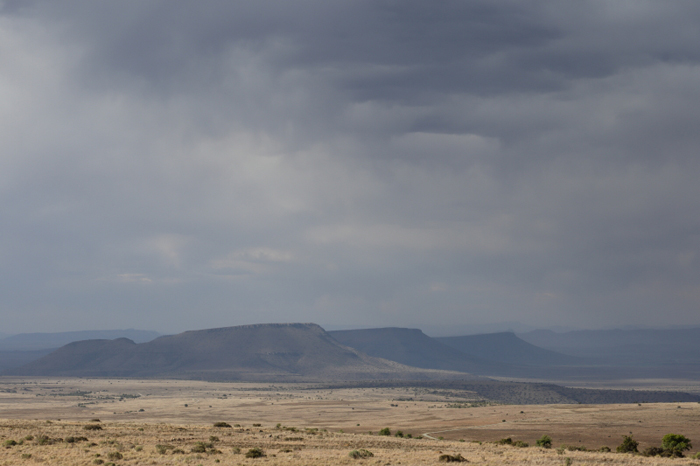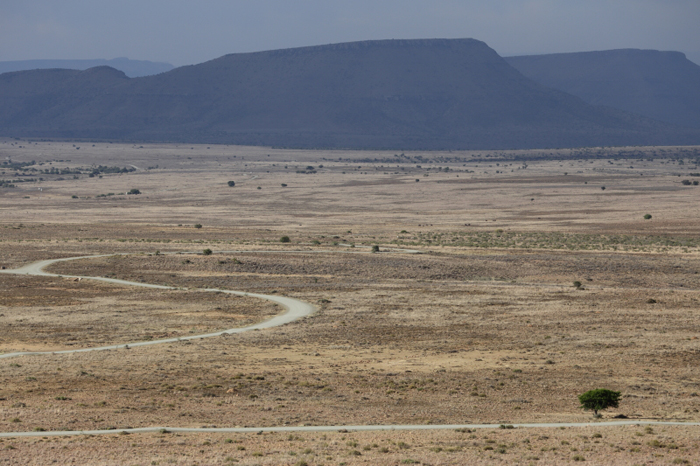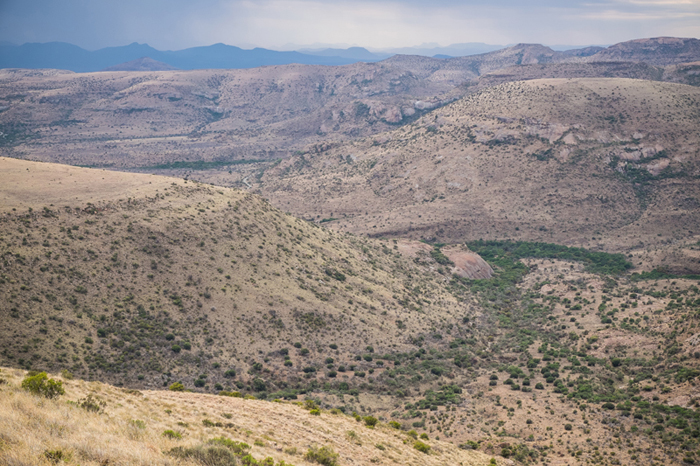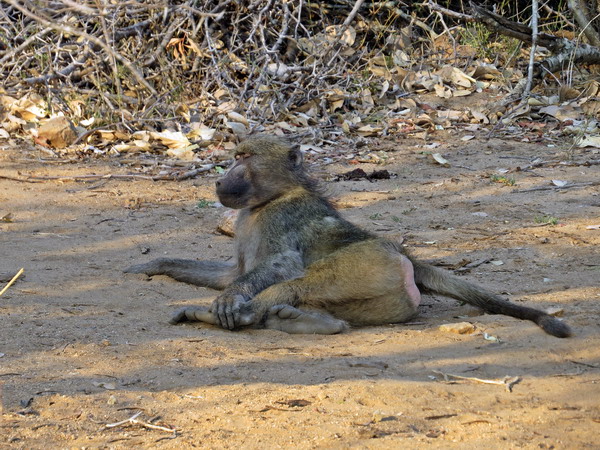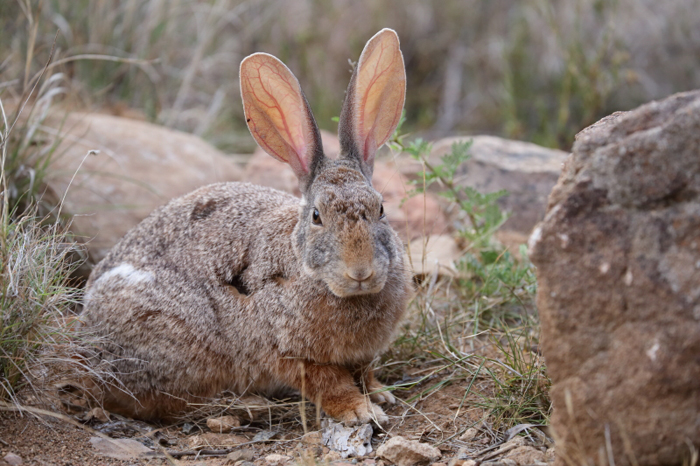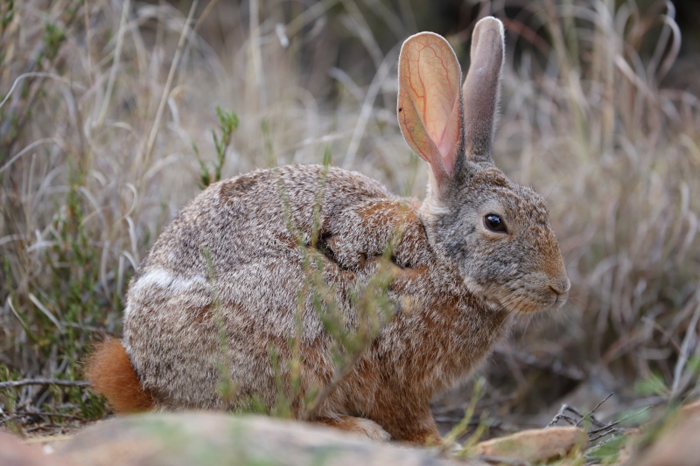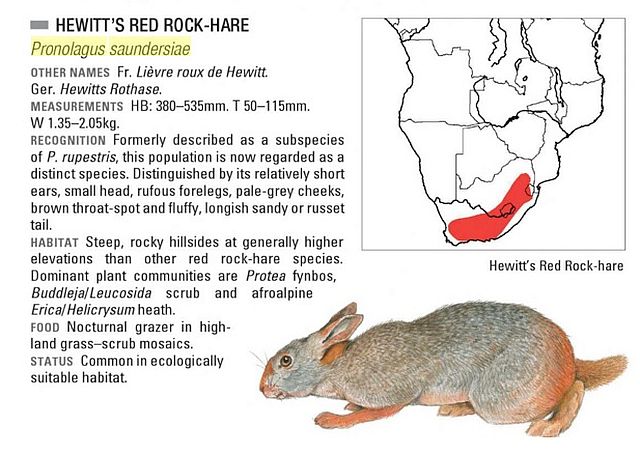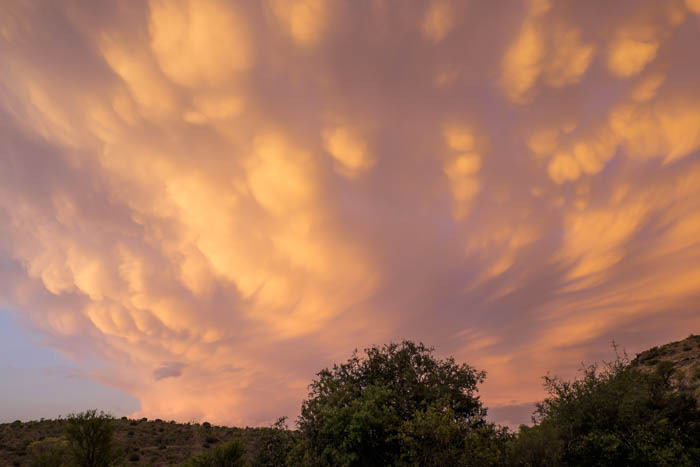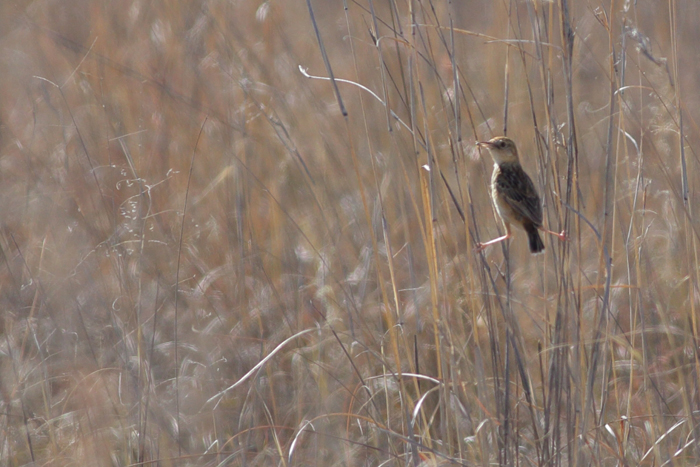We woke up one hour later than usual as we were ‘only’ going for a hike on the Black Eagle Trail above the rest camp. We did this hike last year in the afternoon heat and wanted to try it in the morning. Before we had even finished our breakfast, we managed to see a Southern Tchagra in the tree next to our driveway.
We left the chalet at 6:50 and before we made it to the turnoff for the hiking trail we saw a Cinnamon-breasted Bunting singing from a boulder, a Southern Double-collared Sunbird singing from a treetop, and a Greater Striped Swallow flew over our heads. A Familiar Chat was sitting on the roof of Chalet 8. As we turned off towards the swimming pool, near which the trailhead is located, we saw a Speckled Mousebird in an acacia, two Yellow-throated Petronias were sitting on the swimming-pool fence, an Acacia Pied Barbet flew over, a Red-eyed Bulbul landed in a bush, and a Karoo Prinia was hopping from one tree to another while a Cape Turtle-Dove was calling somewhere in the distance.
As we started walking on the narrow path, four or five White-rumped Swifts and at least two Little Swifts were flying high above our heads. Past the junction where the shorter Imbila Trail peels off from the Black Eagle Trail, we heard pecking first and then caught a Cardinal Woodpecker in the act, soon followed by its mate. We spotted a Yellow-throated Petronia, heard a Cape Robin-Chat, and saw a Cape Bunting singing from a boulder above us. A pair of Bar-throated Apalises landed in a bush briefly, while a pair of Cinnamon-breasted Buntings was seen in a dead tree (the male was singing). A Rock Agama was sunning itself on a rock, while another Cape Robin-Chat was singing for us.
As we walked over a flat rocky section, we saw seven Rock Hyraxes on a rock above us accompanied by a singing Neddicky and African Rock Pipit. As we turned right to climb higher and got to the level of the dassies, Adam took some time to photograph them before they all disappeared as quickly as they appeared. During the photo-shoot, a Red-eyed Bulbul and a Bar-throated Apalis were spotted, while a Bokmakierie was heard singing from an area below us. When we looked behind us, we saw six Mountain Zebras grazing in a high field that one can’t otherwise see from the loops or the main road.
Rock Hyrax
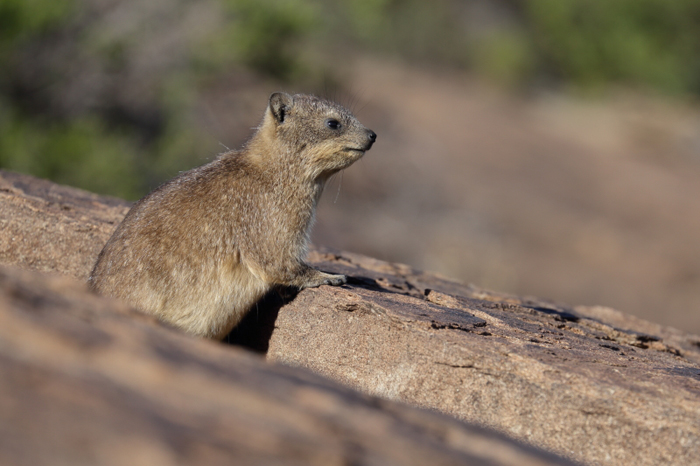
Slogging upwards, a White-necked Raven’s call got our attention and a pair of Southern Double-collared Sunbirds were seen in a bush. A silent Neddicky was sitting in a tree while another, unseen one was singing somewhere close. When we finally got to the top and started our descent to the rest camp, we found a shady spot and had a snack. We could see our chalet below us and a pair of Ostriches beyond it. A Cinnamon-breasted Bunting was calling from a boulder below to the right of us and subsequently flew lower to join his female counterpart and to croon for her. An African Rock Pipit was heard singing, but we couldn’t spot him. We were luckier with another bird species, though, as I discovered a Mountain Wheatear on a boulder and alerted Adam to its presence. As we were walking further downwards, I spotted a huge grasshopper, which Adam duly documented for later identification (it was a Toxic Milkweed Grasshopper Phymateus leprosus). We were back at the chalet shortly after nine and it was already pretty hot.
Toxic Milkweed Grasshopper
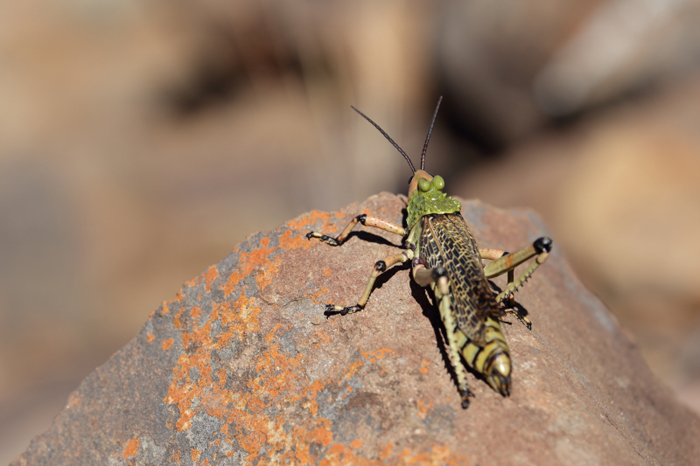
We needed to get toast bread at the shop and wanted to check whether the washing machine was occupied, so after a quick stop at home we hopped into the car and dropped off a load of hiking pants and shirts that didn’t need to be dried afterwards. We were told that the bread would be brought from Cradock after 1 PM, so we went back to the laundry room to await the end of the washing cycle with another washing-machine token to do the rest of the dark items (which needed drying). We returned to the chalet to put our hiking clothes on the terrace to dry and then went to the laundry room to throw the finished laundry into the dryer. Forty-five minutes later we picked up the dry items and relaxed until the evening. It was just too hot and we didn’t want to bake in the car.
At 5:30 we set off for the swimming pool as I had brought a swimsuit and wanted to stretch and cool off. Adam accompanied me with a pair of binoculars to occupy himself while I was doing my laps. There was another couple at the swimming pool, sitting in the shallow area with drinks, so I just did ten laps (the pool is probably 10 metres long) and hopped out again. It was still quite refreshing. We walked back home and had a light dinner on the terrace while watching an Eland and a Mountain Zebra being serviced by two Red-billed Oxpeckers and two Pale-winged Starlings. A Grey Tit made an appearance and when Adam heard an African Rock Pipit again up on the hilltop, he found it with his binoculars and then trained the spotting scope on it. Eureka!
A Little Swift, an Alpine Swift and White-rumped Swifts were catching their own dinner above us. When darkness started to set in, we saw a herd of Red Hartebeest in the veld beyond our chalet which consisted of at least 16 adults and four young. A bat flew over the terrace a bit later. Another warm and starry night allowed us to have the sliding door open again.



